
While accepting the Nobel Peace Prize in 2016, Colombian President Juan Manuel Santos said:
The manner in which this war against drugs is being waged is equally or perhaps even more harmful than all the wars the world is fighting today, combined.”
The death toll from the drug war is much less than the actual warfare throughout the world. However, his sentiment is quite appropriate because a significant percentage of the world’s violence could be prevented with a flick of a pen by ending the War on Drugs.
Cartels and Violence
Imagine if we could essentially eliminate the black market for drug trafficking in Chicago, which has the highest number of gang members and homicides. It’s estimated that up to 80 percent of the city’s murders are gang-related. And one of the main causes of this violence is connected to controlling turf for drug sales.
Gang violence isn’t as rampant throughout the U.S., but the National Gang Center estimated that 13 percent of the murders in the U.S. are gang-related. That falls in line with a similar report by Narco News that concluded that 1,100 drug war-related murders occur each year in the U.S. Keep in mind, that figure is fairly conservative due to the lack of full transparency with crime statistics.
The cartels conduct warfare in a brazen manner that is essentially indistinguishable from terrorist groups.
The U.S. represents the largest market in the world for illegal drugs. Currently, there is a well-documented opioid crisis but the U.S. also consumes more cocainethan all of Europe—and by a wide margin. All told, the U.S. illegal drug black market represents a $100 billion annual industry.
Although there is a serious black market violence problem in the U.S., it pales in comparison to the countries that are source and transshipment points of illegal drugs. For example, there were over 29,000 murders in Mexico last year with roughly 33–50 percent being related to the drug war. That’s not factoring the 30,000 missing persons who are presumed to be dead.
The cartels conduct warfare in a brazen manner that is essentially indistinguishable from terrorist groups. Their conduct is so brutal, they have been known to hang rival gang members from bridges or publicly put bounties on corrupt government officials. Narco money has enabled these organized crime groups to operate with impunity.
The latest example of this corruption involves the leader of the Los Rojos cartel financing the campaigns of 11 mayoral candidates in exchange for political protection. Bear in mind, this isn’t a matter of simple greed. If these officials don’t take the bribes, they’ll likely be killed. After all, over 100 mayors have been murdered in Mexico since 2006.
All in all, narco money has corrupted every segment of the government necessary to protect their organizations. (My free e-book, America’s Drug War is Devastating Mexico, gives much more detail of organized crime’s reign in Mexico.)
As a matter of fact, Los Zetas have even corrupted the highest levels of government in neighboring countries. The Ex-Vice President and former Minister of Interior have each been arrested for allegedly accepting bribes of $250,000 and $1.5 million, respectively.
The Los Zetas cartel is responsible for the worst massacre in Guatemala since the civil war. In 2011, cartel members beheaded 27 innocent farmworkers in search of a ranch owner who the cartel suspected of stealing a drug shipment.
It’s clear that the War on Drugs is one of the leading factors to the high violence.
Due largely to the War on Drugs, the four countries immediately south of Mexico (Belize, Guatemala, Honduras, and El Salvador) are listed within the top six highest murder rates in the world. Furthermore, nine out of the top ten are in Latin America or the Caribbean.
Likewise, 43 of the 50 cities with the highest murder rates are in Latin America or the Caribbean. Four of the remaining cities are in the continental U.S., i.e. Baltimore, Detroit, New Orleans, and St. Louis. Only three cities are not in this hemisphere (South Africa).
Obviously, there are a variety of factors that contribute to violence, notably extreme poverty. One city on the list (San Juan, Puerto Rico) has had fairly low crime in recent years, but Hurricane Maria brought about much instability to the island.
Otherwise, it’s clear that the War on Drugs is one of the leading factors to the high violence. Mexico had 12 cities in the top 50, which was the second highest number behind Brazil.
It’s important to note, Brazil isn’t a major source of drug production. However, it has historically been the second largest consumer market for cocaine and it is the leading transshipment point of illegal drugs into Europe, Africa, and Asia. This is evident in the fact that 17 Brazilian cities are in the top 50 global homicide rates. Fourteen of those cities are located along the Atlantic Coast, which is prime real estate for drug trafficking.
This violence isn’t a result of a “soft on crime” approach; the Brazilian government takes the term “War on Drugs” literally. Like Mexico, the military, along with the police, conduct law enforcement operations and the results are predictable. The Brazilian police kill an average of six peopleeach day. Remarkably, the police are responsible for roughly one out of five murders in Rio de Janeiro, with few being held accountable.
The police, in many cases, are acting in self-defense. However, the Brazilian government has essentially provided the police with impunity for extrajudicial murder and they operate in a brazen manner. In this video, for example, the police performed a drive-by shooting of two unarmed teenagers.
It should also be noted that several of the gangs conduct open warfare against the police. The most gruesome example occurred in Sao Paulo in May of 2006. Over the course of a week, more than 150 people were killed after Brazil’s most powerful gang, PCC, launched a wave of attacks against multiple police stations. The police responded by rounding up suspected gang members and executing them in kind.
Narco-Terrorism
As you read more about the PCC and other criminal organizations, you are likely to come across the term “narco-terrorism.” This term was coined in 1982 by the President of Peru, Fernando Belaunde Terry. Peru was and continues to be one of the top cocaine producers in the world.
The Peruvian communist terrorist group, Shining Path, has been largely funded by “taxing” cocaine traffickers. Those profits have helped them kill approximately 11,000 civilians. Fortunately, the Shining Path’s membership numbers have drastically dwindled and the organization is substantially less active.
The line dividing organized crime from terrorism is increasingly blurry.
Cocaine money also played a major role in the 52-year Colombian civil war that resulted in 220,000 deaths and over seven million domestic refugees. Thankfully, the communist terrorist group, FARC, came to a peace agreement in 2016. This group was responsible for numerous bombings, kidnappings, and thousands of murders.
Most of their members have agreed to lay down their arms. However, an estimated 1,200 dissidents have refused to leave the criminal underworld. Likewise, another communist rebel group and officially designated terrorist group, ELN, has been in on-and-off peace negotiations. However, their group has walked away from the table, each time due to the tremendous profits from cocaine.
Similarly, Colombia’s former right-wing paramilitary terrorist group, AUC, officially disbanded in 2006, but the majority of these men simply splintered into various organized crime groups. The Colombian and U.S. governments haven’t designated these groups as terrorists because they seem to be more driven by greed than ideology.
However, the tactics by Colombia’s crime groups are indisputably terrorizing. These neo-paramilitary organized crime groups, known as BACRIMs, exert totalitarian control in their territory. They indiscriminately murder leftist activists, journalists, and human rights workers. In some cases, they impose a 9 P.M. curfew and invisible borders that are enforced with the death penalty. That’s in addition to their brand of “social cleansing,” i.e. murdering homeless, drug addicts, LGTBQ, etc.
This leads to a concept mentioned in academia, “the crime-terrorism nexus.” In other words, the line dividing organized crime from terrorism is increasingly blurry. Also, many terrorist organizations fund their activities from crime.
Various nations were listed earlier by the highest homicide rates. However, those studies don’t include countries at war. With that in mind, it’s no secret that both sides of the Afghanistan War are funded with opium profits. The Taliban are grossing an estimated $400 million annually from drugs. For many years, the Taliban simply “taxed” drug traffickers in their territory, but credible reports suggest that they’ve expanded into production.
Of the 64 foreign terrorist organizations designated by the U.S. State Department, twenty-three profit from illegal drugs to some degree. Albeit, drug money is generally a small portion of the budget for most terrorist organizations and it is usually derived from “taxing” drug traffickers rather than direct participation.
North Africa has become a major drug transshipment point for South American cocaine headed to Europe and Asia. Heroin from Asian countries is also often smuggled through this region. As a result, the Somali-based, Al Qaeda-linked terrorist group, al Shabaab and the West-Africa based Al-Qaeda in the Islamic Maghreb (AQIM) profit from this underground market. Boko Haram not only taxes traffickers, but the group has expanded their role in this racket. Furthermore, ISIS has taxed shipments of Moroccan hashish destined for Europe by way of Libya.
On the other hand, there are terror groups, such as the Kurdistan Workers Party (PKK) and the Islamic Movement of Uzbekistan (UMI), that are directly responsible for smuggling large quantities of illegal drugs, which comprises a large portion of their funding.
The U.S. Government’s Role
The DEA has launched a series of high-profile cases that have resulted in major headlines, instead of actual narco-terrorists being captured.
These links between terrorism and drug trafficking, ironically, have boosted the DEA in a self-serving manner. In 2006, Congress amended the PATRIOT Act with a statute regarding drug trafficking that directly or indirectly benefits a foreign terrorist organization. As a result, the DEA’s international jurisdiction and budget expanded tremendously.
However, the agency has launched a series of high-profile cases that have resulted in major headlines, instead of actual narco-terrorists being captured. Case in point, three West Africans were indicted in 2009 from an undercover sting operation involving DEA informants who posed as members of the FARC. The informants repeatedly told the traffickers that they wanted to do business with Al Qaeda. Hence, these men simply pretended to have links with a terrorist group to seal the deal. Nonetheless, this aspect of the case hasn’t been widely reported and this case was a major PR win for the DEA.
On the other hand, the DEA had built a long-running and credible investigation, Project Cassandra, against Hezbollah. Their group is widely known as being sponsored by the Iranian government. However, Hezbollah also has generated millions of dollars by smuggling several tons of South American cocaine. The group has business ties with the Colombian FARC and the Brazilian PCC.
Several high-level members of Hezbollah were implicated in Project Cassandra. However, an impressive report by Politico revealed that the Obama administration suppressed this investigation to help finalize the nuclear deal with Iran.
One of the open secrets of the War on Drugs is that the U.S. government, among other nations, has given support to drug trafficking for geopolitical purposes. In this case, the U.S. used the drug war as a bargaining tool with an adversary.
However, the U.S. government’s complicity with drug trafficking has generally benefited its allies. That’s the case in the Afghanistan War and it was certainly the case during the Vietnam War. Likewise, drug money helped U.S. interests in dirty wars, such as the Contras in Nicaragua or the Mujahideen in Afghanistan. Furthermore, several narco-linked, right-wing dictators in Latin America, including Manuel Noriega, have benefitted from strong U.S. support.
All in all, there are many forms of violence resulting from the War on Drugs. Nonetheless, our politicians have been unwilling to address the root cause. As a result, government bureaucrats have pointed to this violence to justify larger budgets for the drug war.
However, with multiple decades of this failed policy behind us, we should realize that the demand for illegal drugs will never decrease in a substantial manner. Hence, continuing down this path will continue to enable the violent tactics of low-level criminals, mafia organizations, terrorists, dictators, and empire-driven governments
Disclaimer: We at Prepare for Change (PFC) bring you information that is not offered by the mainstream news, and therefore may seem controversial. The opinions, views, statements, and/or information we present are not necessarily promoted, endorsed, espoused, or agreed to by Prepare for Change, its leadership Council, members, those who work with PFC, or those who read its content. However, they are hopefully provocative. Please use discernment! Use logical thinking, your own intuition and your own connection with Source, Spirit and Natural Laws to help you determine what is true and what is not. By sharing information and seeding dialogue, it is our goal to raise consciousness and awareness of higher truths to free us from enslavement of the matrix in this material realm.
 EN
EN FR
FR



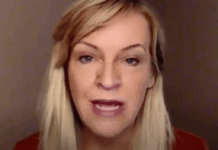

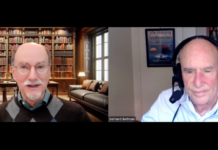


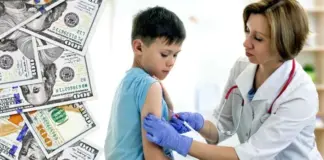
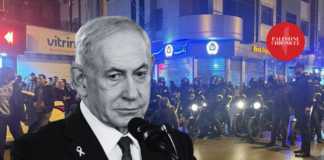
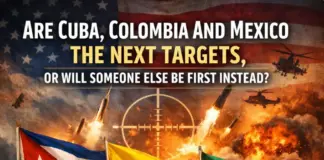
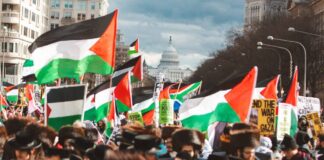

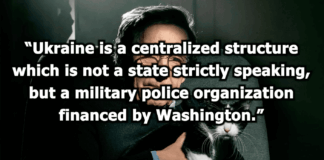












Gary Webb was a hero in San Jose. He was sold down the Dark polluted river by his own. They, themselves, afraid, and brainwashed to not ever look back. Otherwise, see what they can do to you? They make an example out of you. They certainly don’t mind making you a martyr…. you are still a good example for them to use…. a real good threat. Just like for all whistleblowers. I must say Gary Webb is a hero. God Bless him.
Everyone should read “The Dark Alliance” by Gary Webb. It has everything one wants to know about the drug cartel, including the hypocrisy of a lot of people pretending to be at war with the drug cartel. Gary Webb was “suicided”. Yes, I am aware of all the propaganda surrounding his death: “he was depressed”, ” he could not find a job”, etc. A Pulitzer winning reporter could not find a job! All were offshoots of his outing the real culprits in this war against drugs. I have not spoken or written about Gary in a while since it was a long time ago when I read his book, but when I google his name these days, the first things that come up are all negative write ups about the poor guy.